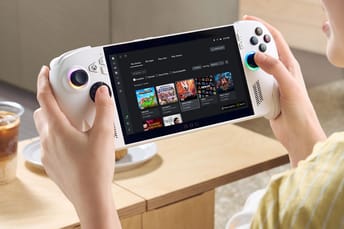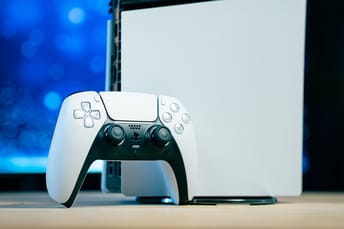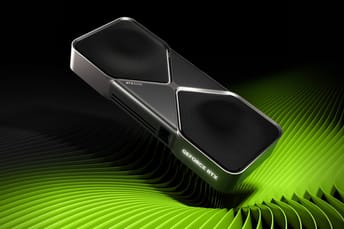
Mechanical Keyboards: An In-Depth Guide to Layouts and Switch Types
|
|
Mechanical keyboards have become one of the most essential attributes of modern PC gaming. Only a decade ago, most players used traditional membrane models, but today the market is overflowing with mechanical ones for every taste and budget. How do you figure out the variety of switches, forms, and ergonomic features and choose the best option?
This guide will walk you through everything you need to know about mechanical keyboards—the key differences from membrane models, switch types, form factors, and what to consider when choosing the perfect one.
Table of Contents
- Introduction
- Mechanical vs Membrane Keyboards
- Types of Mechanical Keyboard Switches
- Form Factors of Mechanical Keyboards
- Advantages and Disadvantages of Mechanical Keyboards
- Key Criteria for Choosing a Mechanical Keyboard
- Additional Tips
- FAQ
- TL;DR
Introduction
The history of mechanical keyboards began before the rise of PC gaming. The first widely known computer keyboards with mechanical switches appeared in the 80s, when IBM released its Model M. It was a truly indestructible keyboard: many devices of that generation still work today. The IBM Model M became a benchmark for office work, printing huge text arrays, and, by the way, was notable for its loud clicking.
With the advent of cheaper technologies (rubber-membrane keyboards), many manufacturers began to switch their product lines to budget options. The mechanics were considered either outdated or unnecessarily expensive. However, some users did not give up and continued to use the mechanical models for the sake of comfort and reliability.
In the 2000s, the growing interest in esports and the general fascination with building their own PCs gave mechanical keyboards a second life. Gamers have noticed that the accuracy and response rate on the mechanics are much higher than on cheap membrane models. The first specialized game series appeared, and now different brands (Cherry, Razer, Logitech, SteelSeries, etc.) have brought dozens of switch options and designs to the market. Today, mechanical keyboards have become a whole subculture that values not only efficiency but also aesthetics, from various keycaps and multi-colored backlights to the ability to upgrade each keyboard element.

Mechanical vs Membrane Keyboards
To understand what makes mechanical keyboards so good, it’s important to look into their fundamental differences from membrane ones.
How membrane keyboards work
In inexpensive models, there is a rubber or silicone membrane with dome bulges under all the keys. When you press the button, this membrane bends and closes the electrical contact on the printed circuit board. Often, these keyboards do not have a pronounced tactile trigger point, and each press feels quite soft and unresponsive. The service life of a membrane keyboard is usually shorter, and the responsiveness and precision may deteriorate over the years.
How mechanical keyboards work
In a mechanical keyboard, each key is operated by an independent switch—a small mechanism with a spring and metal contacts that close when a certain amount of pressure is applied. This provides clear tactile (and often audible) feedback. The resource of mechanical switches is usually several times higher (at least 50 million clicks are usually claimed).
Responsiveness and feedback
Unlike in membrane keyboards, there are no gaps or blurred clicks in mechanical models—switches deliver a clear, tactile response with no ambiguity. This precision helps players reliably execute multi-key inputs, which is extremely important in some games.
Reliability and cost
Yes, membrane models are cheaper, lighter, and quieter. But if you’re looking for high durability and in-game advantages—mechanical keyboards are winning the game. Many users consider getting one a long-term investment because, even though a mechanical model is usually quite expensive, you can use such a keyboard for years without loss of input quality.

Types of Mechanical Keyboard Switches
The key point when choosing a mechanical keyboard is to determine the type of switches. Depending on whether you need a loud click, a soft and steady tap, or a noticeable tactile trigger point, you should choose different switch options.
Linear switches
Linear switches do not have a pronounced tactile step or click. The keystroke is smooth from start to finish. Often, these switches are popular in shooters, where fast reactions and repeated clicks are important. Popular examples include Cherry MX Red, Gateron Red, Kailh Red, etc. They require relatively little effort, and the sound when pressed is quieter than brown switches, for example.
Tactile switches
Tactile switches have a small bump in the middle of the stroke, which signals activation, but without a loud click. An example is Cherry MX Brown or Gateron Brown. They are preferred by users who like to feel physical feedback but do not want loud clicks. This is useful not only for games (one of the most common use cases is in MOBAs) but also for typing.
Clicky switches
There is both a tactile step and a clear click when pressed, they’re great if you like clear confirmation of each press. Well-known options are Cherry MX Blue and Kailh Box White. But keep in mind—they are noisy. At home, the sound might bother your family or roommates, and in the office, it could annoy your coworkers.

Form Factors of Mechanical Keyboards
In addition to the switch type, it is important to consider the keyboard’s form factor. Modern mechanical keyboards come in a variety of sizes, each with its own pros and cons.
Full-size (96%/100%)
They include the entire layout: the main typing area, functional row, and a dedicated number pad (numpad). Full-size keyboards offer maximum functionality and are ideal for users who frequently work with numbers or prefer a familiar, complete layout. However, they take up more desk space.
Tenkeyless (TKL, 80%)
The numpad is removed, but all other keys remain. It is a popular choice among esports players, as TKL saves space for the mouse and makes it easier to transport the keyboard.
60%, 65%, and 75%
Smaller layouts like 60% remove not only the NumPad but also the function row and sometimes even arrow keys. These ultra-compact keyboards are ideal for small desks or mobile setups. 65% keyboard keeps arrow keys and a few extras. 75% one brings back more function keys while staying compact.
Ergonomic and uncommon layouts
These can be split keyboards, models with an end-to-end layout, or 40% versions with only letters and numbers and a minimum of additional keys. Enthusiasts like these options, but they take getting used to.
Your ideal layout depends on your workflow and desk space. If you need room to move your mouse freely and don’t need additional functionality, TKL or 60% keyboards might be your best option.

Advantages and Disadvantages of Mechanical Keyboards
Like any tech, mechanical keyboards have strengths and weaknesses. Let’s look into it in detail.
Advantages of mechanical keyboards
- Durability. Most mechanical switches are designed for tens of millions of clicks, while membrane keyboards start to wear out much faster. This means that with proper care, a mechanical keyboard will last you a very long time.
- Responsiveness and speed. For esports athletes and competitive gamers, every millisecond is important. Mechanical keyboards typically offer faster response times and support multiple simultaneous key presses (N-key rollover).
- Tactile and audio feedback. Many users like the physical feeling of tapping. Clicky and tactile switches provide an additional sense of control, giving you better feedback.
- Build quality and customization. Most mechanical keyboards have a robust construction, metal plates, and reliable stabilizers. Additionally, enthusiasts can replace the keycaps, lubricate the switches, or install different types of switches. This opens up huge personalization possibilities.
Disadvantages of mechanical keyboards
- High price. Compared to their membrane counterparts, mechanical keyboards are generally more expensive. A high-quality model can cost many times more than a basic office keyboard.
- Noise. Even linear switches usually sound more noticeable than membrane keyboards. And clicky switches, in particular, can be very noisy and may disturb others nearby or come through the microphone.
- Size and weight. Full-size mechanical keyboards are often heavier and more massive. However, you can choose TKL or 60% version for better portability.
- Complexity of choice. Different brands of switches (Cherry, Gateron, Kailh, TTC, Akko, etc.) and form factors—a beginner can get confused by the variety and make a mistake with the first purchase without proper research of specific brands.

Key Criteria for Choosing a Mechanical Keyboard
It’s time to discuss what exactly to look at when buying one. There are a huge number of models on the market, and setting priorities correctly is the key to making a good choice.
The noise level
- If you live alone or have a separate soundproof room, the noise level may not be so critical.
- If you have colleagues or roommates around, then you should think about linear or quiet tactile switches. Additionally, keyboard dampeners (O-rings) can be used to soften the sound and stroke of the keys.
Tactility and speed
- For shooters, linear switches (red, silver) are used more often.
- For games that require frequent command changes (MOBAs, RTS games), brown tactile switches may be suitable.
- If you like clicking and typing a lot, you’ll probably be satisfied with blue or other clicky switches.
Additional functionality
- RGB backlight. In modern keyboards, it can be either static (monochrome) or fully addressable RGB with a wide range of effects.
- Programmable macros. This is especially useful for MMORPGs and MOBAs. It’s easy to assign entire chains of actions to a single button.
- Multimedia keys. If you often pause music or adjust the volume, you should pay attention to models with dedicated buttons.
Budget
- Entry-level mechanical keyboards from well-known brands can cost about 40-80$ (or the equivalent in another currency).
- The mid-price segment is close to 80-150$, where there are already options with RGB, additional features, and good build quality.
- The premium segment (150$ and above) often gives access to more unique switches, better materials (for example, PBT keycaps), and sometimes the possibility of hot-swapping switches.
Ergonomics and comfort
Look for features like a wrist rest, adjustable tilt, and low-profile casing. A keyboard that feels awkward or too tall can quickly lead to fatigue—especially in long gaming sessions. If possible, try it out before buying to make sure the size and shape feel right for you.

Additional Tips
Mechanical keyboards are devices that, if handled correctly, will last for years. Here are some recommendations to further enhance the convenience and extend the life of the keyboard.
It is advisable, if possible, to feel the keyboard live. Demo booths are often set up in stores or at gaming exhibitions, where you can click on different switches and understand which is better for you.
Care and maintenance
- Regular cleaning. Mechanical keyboards sometimes need you to take out the caps and remove the dust and crumbs underneath. This is especially true if you are eating at your PC.
- Lubrication of switches and stabilizers. Enthusiasts often enhance their keyboards by lubricating switches and stabilizers. This reduces friction, quiets down the sound, and makes keystrokes feel smoother and more consistent.
If you want to change the type of switches without soldering, look for keyboards with hot-swap technology. This way, you can easily put, say, linear switches on letters and tactile switches on control keys. This provides even more flexibility but also increases the cost.
The price/quality ratio
Mechanical keyboards don’t have to be super expensive. There are plenty of solid mid-range options that offer great switches and high build quality without the premium price tag. The key is to do your research—check different reviews from users and experts and test the keyboard in-store to see how it feels, if possible.

FAQ
What is a mechanical keyboard?
A mechanical keyboard has an individual switch beneath each key, giving you direct feedback and precise control. This design typically surpasses membrane keyboards in both responsiveness and longevity.
Which mechanical switches work best for gaming?
It depends on your style. Linear switches (like Cherry MX Red) are favored for quick reactions, while tactile or clicky variants (e.g., Cherry MX Brown or Blue) provide more pronounced feedback—great for those who like feeling a distinct bump or hearing a click.
How do I clean a mechanical keyboard?
Remove the keycaps, then use a soft brush or compressed air to clear out dust and crumbs. Lightly wipe down surfaces with isopropyl alcohol, ensuring no excess fluid drips into the switches. Let everything dry completely before reattaching keycaps.
Why are mechanical keyboards so durable?
High-grade switches and robust construction allow mechanical boards to withstand tens of millions of key presses, significantly outlasting typical membrane designs. Many models also come with sturdy metal backplates and quality stabilizers.
Are mechanical keyboards always noisy?
Not necessarily. Clicky switches make a distinct sound, but linear and silent switches can be much quieter—ideal for shared environments or nighttime use.
Can I customize a mechanical keyboard?
Absolutely. Enthusiasts swap out switches, add specialty keycaps, and even modify stabilizers. Many boards also support firmware tweaks, letting you set macros or remap keys for a fully personalized experience.
TL;DR
Mechanical keyboards have taken a special place in the gaming world for a reason. They combine high reliability, pleasant tactile and audio feedback, as well as fast response, which is much needed in competitive games. They are considered the best solution not only for games but also for typing.
The main thing to pay attention to when choosing one is the type of switches (linear, tactile, or clicky), the form factor (from full-size to 60%), as well as a set of additional functions (macros, backlight, multimedia keys). When choosing your first mechanical keyboard, feel free to test the options live, watch reviews, and compare prices.
Sometimes it’s better to pay extra for a high-quality build and a convenient form factor than to settle for a random model just because it has a popular brand. Your keyboard directly affects gaming comfort and accuracy of actions, and in the long run, it can be one of the most intelligent investments.



